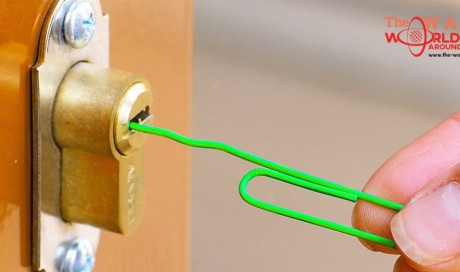In Vietnam, meanwhile, he photographed ways in which weapons and war machinery have been repurposed. “Vietnam deals much more with responses to artefacts – there are a lot of sculptures, and a lot of artists being employed to reconfigure war remnants and put tanks on top of each other, turning shrapnel into sculptures.”
This offers a chance to take a step back, and can give a more sophisticated take on conflict. “There are nuanced museums in most places,” says Larkin. “There are a couple of museums in Vietnam that are trying to present things in a more balanced way, and within the UK, the Imperial War Museum in London is incredibly nuanced – although there’s not much about contemporary conflicts with Iraq and Afghanistan, it’s more artists’ responses, which is a comfortable way for museums to tackle something, presenting somebody else’s interpretation of it.”
Imperial War Museum #2 (Duxford, UK), 2016 (Credit: Jason Larkin, Courtesy of Flowers Gallery)
Yet Larkin believes “there are a lot of places that don’t do that” – including the UK. “The Imperial War Museum in Duxford, just outside Cambridge, is really just war machinery. Those spaces are sold very much as family days out – they can be entertaining, they put on big air shows – but most of the machinery on display is deadly, and has been used for deadly consequences.”
Royal Air Force Museum #1 (London, UK), 2015 (Credit: Jason Larkin, Courtesy of Flowers Gallery)
That hasn’t stopped him being drawn in. “I’ve got a one-year-old, and the last time I was in the Imperial War Museum in Duxford I thought: ‘I can’t wait til he’s two or three because I’ll definitely bring him along to these air shows, they’re amazing’.” He acknowledges the attraction of many of these spaces. “I can get pulled into it – it is awe-inspiring, being beneath a huge bomber – I’m not removing myself from it.”
But the way in which information is presented can be misleading. “It’s just a select few people at the top who get to decide on how museums are going to look,” he says. “There are a lot of people in the countries I’ve visited who would not agree with what’s in their museums – it’s just what the state or one rich influential group or the army want to say.”
Museum of Fort San Carlos (Havana, Cuba), 2016 (Credit: Jason Larkin, Courtesy of Flowers Gallery)
...[ Continue to next page ]
Share This Post














